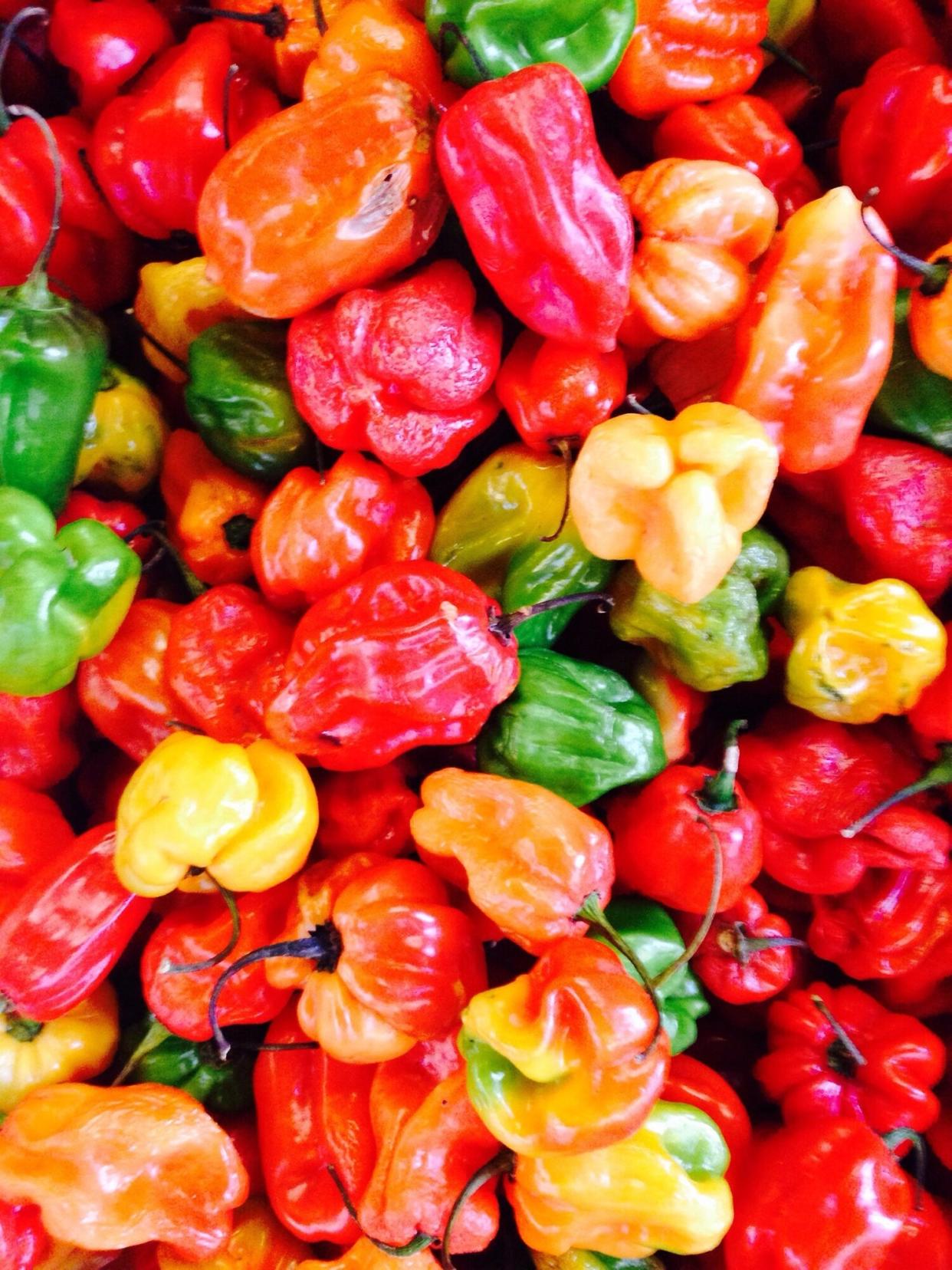How To Cook With Hot Habaneros and Not Lose Your Cool

Manifing Skrobecka / EyeEm/Getty Images
Habanero peppers may be cutely shaped and full of color, but don't let looks fool you. They are also full of fire. On the Scoville scale, the method used to rate the heat of peppers, the habanero weighs in at 100,000 – 350,000 SHU (Scoville Heat Units), a whopping 12 to 100 times hotter than the more widely used jalapeño pepper. Don't let the heat scare you off, though, because habaneros, when handled properly, can be flavorful and enjoyable in the right dishes, such as this Fiery Sweet Dipping Sauce, ideal for serving with both ribs and grilled chicken.
How to Reduce Some of the Heat
Much of the heat contained in chili peppers of any kind is found in the interior membrane and seeds. The skin and walls of a pepper definitely contain heat as well, but the insides carry most of the fire. To reduce the pain a tad, clean out the seeds as well as the white pith (the membrane that holds the seeds to the pepper) and cook only the shell. You will still get the pepper's flavors, but less of the intensity.
Don't Use More Than You Need
As stated above, there is a huge range of heat levels between sweet and mild to super-hot peppers. Maybe you just can't get enough jalapeños in your favorite salsa or spicy slaw recipe but think twice before adding more habaneros to a dish. One single pepper, or even part of one, may be enough for your taste. Follow your recipe as well as your tolerance level (and that of your guests). You don't want the dish to become so hot and painful that no one can enjoy it. This recipe for Spicy Habanero-Mint Jelly uses 3 seeded habaneros, but the heat is cut when the habaneros are blended with sweet red bell peppers and 7 cups of sugar.
How Do You Handle a Habanero?
Very carefully, and with quality food handling gloves! It is a good idea to use gloves any time you handle a pepper, but especially the hotter ones that contain a high level of capsaicin, the compound behind the spiciness and heat of chili peppers. Working with habaneros without wearing food handling gloves can lead to a painful case of chili burn on your hands and anywhere else you happen to touch. Be careful of where and what you touch even when you wear the gloves; resist rubbing your eyes or swatting hair off your forehead until after you have removed the gloves and washed your hands.
WATCH: 10 Southern Food Brands Still Proudly Made in the South
If you happen to get a chili burn, or perhaps you ate too much of your habanero-infused dish and your mouth is on fire, reach for some milk. Water won't help at all, since capsaicin (the culprit of your discomfort) is an oil and water will just spread it. Acids break down oils and milk, surprisingly, is an acid. Guzzle a glass of milk if your mouth is burning, or if you have a burn on your hand, dunk it in a bowl of milk. Lime or lemon juice is another option if you have a skin burn (you probably don't want to drink it).

